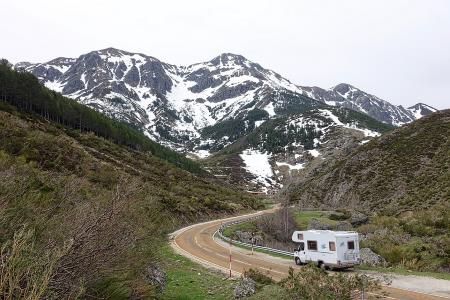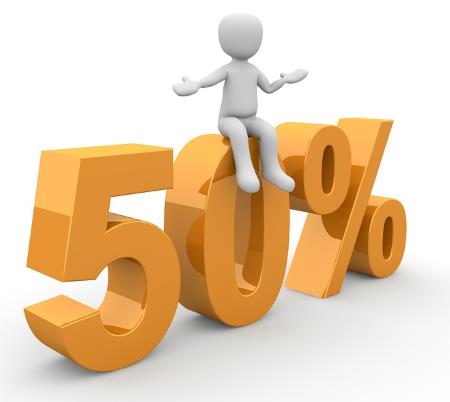Blog

10 Proven Methods For Financing Your Tiny House
So you have made the big decision to live in a tiny house: congratulations! This will end up saving you a ton of money over the years, and if you get to live in your dream tiny home in the process then it is a no-brainer decision! However paying for the tiny house itself can be a massive issue, and it can cause you to get bummed out knowing that your dream is so near and yet so far. Thankfully there are options available to you. Whilst some people refuse to get into debt for their tiny house purchase, others argue that living in a tiny house will save you (lots) of money: thus allowing you to repay that debt and save money faster.
After you have decided exactly what tiny house you want (the design, and whether it is fixed on a foundation or it is on a trailer), you can get a firm price in mind for it and then starting to look at the (plentiful) financing options. Borrowing off friends or family is one option, as are commercial loans from the bank or even the building company. RV loans, peer-to-peer lending and chattel mortgages are amongst a range of other options as well.
To help you get closer to living in your dream house, we have written up this handy free guide on how to pay for/finance your tiny house. Please note, however, that we are not financial advisers and the content is provided ‘as is’ – we do not warrant nor assume any legal liability for the information provided. With that said, we have done our best to make this guide as helpful and complete as possible and we know that many happy tiny house livers have used one or more of the financing options mentioned in this article.
1. Pay With Your Savings
Okay, so it is worth starting out by stating the obvious option: if you have enough money to pay for your tiny house with savings, then it is generally recommended to do this (unless you will be left penniless and unable to hire a truck to move your new home, of course!). But we will also say right off the bat that we know most people are reading this article because (like us!) you are unable to stump up a 5-figure amount to buy a tiny house. So feel free to skip this section; it is included mainly for completeness.

The benefit of paying for your tiny house with savings is obvious: you will have no housing related debt and therefore will not have to make repayments on an expensive finance deal. Any extra money can therefore be saved straight away, and you will have extra peace of mind knowing that you are not like most people with a massive mortgage hanging over their heads.
Some people consider this option the truest ‘version’ of tiny house ownership: i.e. you are entirely self sufficient and not beholden to a third party. If you want to go off-grid, you can go off-grid (unless your tiny house has a permanent base, of course!). Being able to up-sticks and move your tiny house on wheels anywhere in the country (without notifying some random financial company) is a freeing thought. But we disagree that there is a ‘true version’ of tiny house ownership: your tiny home dream is yours, however you achieve it. If that makes getting finance to pay for it, then so be it! So let’s have a look at some of these other financing options.
2. Borrow Off Friends And Family
There is a growing phrase called ‘BoMaD’ which stands for ‘Bank of Mom and Dad’ and – as you can probably guess – it is referring to young people’s parents giving them a financial boost by giving (or loaning) them money: such as for their first house purchase.
Sometimes the deposit for a first house can be $25,000-$35,000 (if it is a 10% down payment in a somewhat expensive area)… so instead of them giving money for a fraction of a house, why not use the same money for an entire tiny house (or at least a massive chunk of one)? Yes there are tiny houses worth more than $35,000, but it is possible to get one for this sort of money. Even if you go for a $60,000 tiny house, having around half of the money for it would be a massive boost – especially if you have some money in the bank yourself.
The same is true, of course, for lending off of close friends and family: if they are willing and able to do it, then do consider this option. We would, however, always recommend to get something in writing: no matter how much trust and love you have for each other, memories can become foggy in time and it is worth knowing exactly how much you need to pay back (and over what time frame).
Some of the ‘best’ savings rates at the moment at barely above 2%, so if you agree (say) a 5% repayment rate with your close friend, this would give a big return for them whilst still being a fairly cheap financing option for you. Let’s run the numbers: if you buy a $40,000 tiny house and put $7,500 in yourself, you would borrow $32,500 from your friend/family member. When paid back over 5 years, this would be $613.32 a month – and $4,299.20 total interest. Whilst that might sound a lot, it would still be less than a full mortgage – and mean that you are debt free in just five years. Naturally the repayments can also be a lot cheaper than this if you buy a cheaper tiny home, and put in a bit more of a ‘deposit’.
3. Get A Personal Bank Loan
If you are unable to fund things yourself or buy off friends or family, your only real option is to borrow from a third party (unless you have a lot of time spare – if you do, see our final section). In this case, a commercial bank is usually a safe bet for a loan with a fair interest rate. Bank loans might be secured against an asset (such as if you have a car or current property), or they can be unsecured – you would have to check with your bank.
Some banks only lend up to a certain level, although many nowadays will lend up to $100,000 (in some cases) – which should mean that a bank loan will be sufficient for your tiny house purchase. The only downside is cost: the APR could be higher than the friends or family ‘discounted rate’ unless you have an excellent credit score, meaning that $40,000 borrowed over five years might see repayments up to $973 per month (on a 15.97% interest rate). This is according to Wells Fargo based on someone with a ‘good’ credit score.
Loans over five years are also fairly rare, meaning that if $800-900 per month is too high for you, you might need to either borrow less or consider an alternative means of financing your new home. One alternative option is a private lender. Upstart is a reliable lender that can help you with a personal loan. If you want to check out qualification requirements, check out this fantastic Upstart review!
4. Get Finance Via The Tiny House Builder
Some tiny house building companies will offer ‘in house’ finance, meaning that instead of being an affiliate for a third party loan company, they will arrange the finance themselves and organize everything on your behalf. Tumbleweed Tiny House Company and Escape Traveller are two such companies, especially since many of their homes on trailers are RVIA certified (more on this in the next section) which helps to arrange ‘tiny house’ finance.
So if you are getting your tiny house built by a tiny house specialist, speak to them and see whether they offer finance. We will be honest and say that many do not offer their own finance, but even if they do not, they will probably offer some helpful advice and let you know how their other customers financed their home.
5. RV Loans

Getting an RV-specific loan could be the best option you have for mainstream funding of your tiny house, but it has some drawbacks and caveats:
- You need your tiny house to be on wheels/a trailer (naturally! It is not an RV if it is fixed on a foundation!), and it will need to be RVIA certified.
- This means that your tiny house cannot be your permanent residence. After all, an RV is a temporary structure designed for temporary living. If you intend to permanently live in your tiny house, an RV loan will not be applicable.
- You will need a good level of credit and a fixed address.
- Be able to give a make/model of the ‘RV’ and trailer (since, of course, this is an RV loan not a tiny house loan). If you have a custom made tiny house on a general trailer, you will naturally be unable to provide this information.
If you do meet these requirements, however, an RV-specific loan can be a good option – and the interest rates are fairly reasonable too (since they are naturally secured against an asset: your ‘RV’/tiny home). Tumbleweed Tiny Houses are able to build RVIA-compliant tiny houses on a trailer.
Before we go further, we will mention that this option of financing is a debated subject. Rocky Mountains Tiny Houses proudly mention that they are not RVIA certified and they do not want to be. They also mentioned that the RVIA have cautioned tiny house companies against ‘gaming’ the system, and building structures which are clearly permanent homes but which are being passed off as an RV. In our opinion this all comes down to what we said earlier: “your tiny house cannot be your permanent residence”. If this applies to you and your RVIA-compliant tiny house genuinely will be a more temporary residence, then an RV loan is designed for you!
If this is the case, there are a range of companies that offer RV loans, some of which include:
6. Peer To Peer Lending
A new genre of lending has popped up (seemingly since the 2007/2008 financial crash) which is known as peer to peer lending. This is where regular folk like you and I register for a regulated service online, to either lend other people money or borrow off others. There is risk in this approach (especially for lenders) because people can default: and this means that the interest rate is usually a bit higher than some of the other options.
However at the same time, P2P lending can be a great possibility for financing your tiny house because such lending tends to be more accepting of ‘weird’ lending situations. When we say ‘weird’ we do not disparage tiny houses: we purely mean that commercial banks are typically very rigid in their lending criteria (you can almost imagine a banker in a suit looking confused at your tiny house, saying “it is not big enough to be a house, so no mortgage. But it is not an RV, so no RV finance. DECLINED.”!). However peer to peer lending can be more accepting of non-standard lending situations, and also emerging movements (like tiny houses) which the mainstream Wall Street banks have not caught up to yet!
Lenders include:
- Lending Club
- Prosper
- Tiny House Loans – these is a more niche service, but it is one that is tailored to tiny houses: they aim to connect you to people in the tiny house community that might be willing to lend you the amount you require to fulfil your tiny home dream.
7. Home Equity Loan
If you are already a property owner and you have built up a decent amount of equity in it, you might be able to get a form of second mortgage known as a home equity loan. This is where you essentially borrow back the amount that you already own in your property.
To give an example, if your property is worth $200,000 and your outstanding mortgage is $150,000, then your equity is $50,000. You could potentially get a home equity loan for a certain amount of this equity, leading to a loan worth $35,000-$40,000. Such loans are usually fairly low interest, too, since they are naturally secured against your main house.
This can definitely be an option, especially if you want to ‘dip your toes’ into the tiny house world. You could potentially try it out just during the working week (or just on weekends), returning to your main home at other times. And if you decide you like the lifestyle, then you can sell your main house and possibly pay off the home equity loan in the process (certainly, you will not be able to sell your main house without making arrangements for the home equity loan).
However we would argue that if you are just planning on trying out a tiny house, getting a RVIA-certified one and getting RV finance (as explained in our section earlier) might be a better solution for you.
8. Chattel Mortgage
There is a lesser known financing option called a chattel mortgage, which is defined as a mortgage on a movable item of property. A tiny house on wheels would naturally fall into this description, especially if it is easier to value due to being RVIA-certified. If all other options have failed you, it could be worth exploring this option – either with a local company who offers chattel mortgages, or possibly via a specialist broker.
These work a little like car loans, and are designed for items which frequently move – or are based on leased land. Because they are tied to the asset being mortgaged (i.e. they are secured finance), they have a lower interest rate than loans given without collateral – although naturally, the mortgage company will own your tiny house until you make the final payment.
9. Consider A Cheaper Tiny House

We have mentioned many options above, many of which are mainstream finance options for funding a big five-figure purchase. However tiny houses are like many things in life: there are premium options, mid-range options, and more budget/cost-effective options. If you cannot afford a Tesla Model S-priced tiny house, consider looking at a cheaper alternative.
Jay Shafer recently built his own tiny house for $5,000 and whilst this is ultra-cheap (and Jay Shafer is obviously a seasoned tiny house builder), it does show that not all tiny houses need to be mega-expensive. Incredible Tiny Homes offer homes from $25,000, and the Tiny House Marketplate have 264 listings for tiny houses which are cheaper than $30,000.
A cheaper tiny house can be great because it will mean that you do not get into as much debt when making your purchase, leading you to saving money and being debt-free earlier than if you paid $80,000+ for a premium tiny house.
10. Build It Yourself And Spread The Cost
The final option is to considering building the tiny house yourself. This will naturally save a lot of money in the labor costs which will no-doubt add $10,000+ onto the price of the tiny house.
There is also something inspiring about quite literally building your own house: if you have the time to do so, of course! If you go down this route, you can either try and figure it out yourself or buy pre-prepared plans such as from Tiny House Plans or Tiny Home Builders. There plans cost less $200-$400 and could save you a lot instead of potentially making mistakes mid-way through your build.
The other benefit of this approach is that, even if you can dedicate a few hours each day to the build, you will likely take months or even years to build your tiny house: meaning that you are spreading the cost of the materials naturally over the months. Spending a few hundred dollars here-and-there on materials is better than looking for $50,000 down the back of your couch to pay a tiny house company!